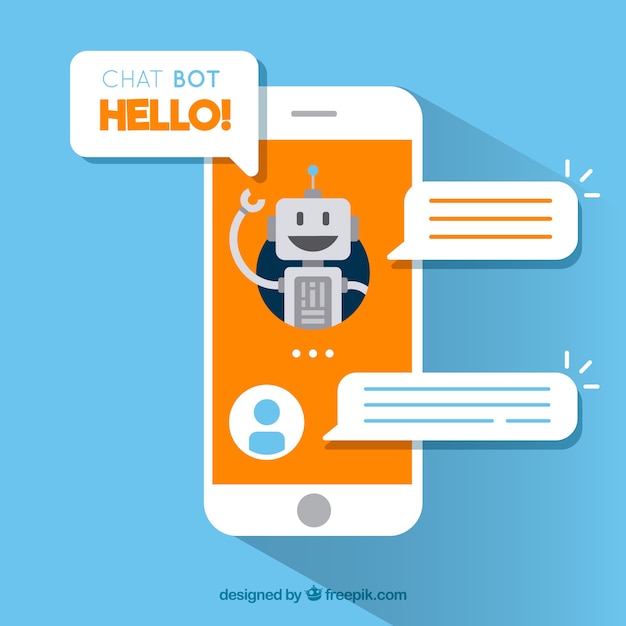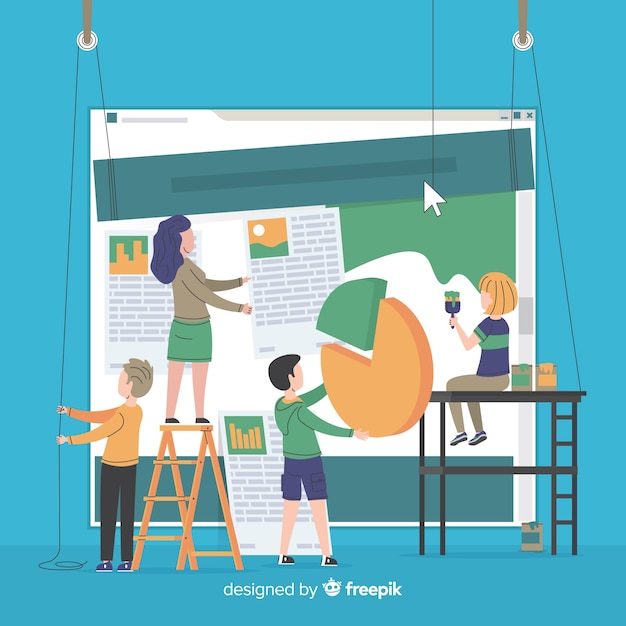Must-Have Marketing Tools for Leaders to Boost Team Performance and Achieve Goals

Photo by macrovector @ freepik
Have you ever tried assembling IKEA furniture without the right screws or wrenches? Sure, you might eventually get that bookshelf standing (sort of), but it's likely to wobble and lean like it's had one too many at the office happy hour. The same goes for leading a marketing team without the right tools—good intentions can only get you so far before things start to teeter.
So, what sets the goal-crushing teams apart from the ones perpetually stuck in first gear? Hint: It's not free coffee or motivational speeches. It's the tools leaders use to boost performance, streamline collaboration, and transform ambitious targets into everyday victories.

This may interest you: Infographic: 9 Daily Rituals To Boost Your Work Productivity
Whether your teammates are brainstorming in a glass-walled office overlooking the city skyline or crafting campaigns from their kitchen tables in bunny slippers, the right tools ensure everyone is not just on the same page but writing the success story together.
In this blog, we'll dive into the must-have marketing tools that help leaders not just chase but actually achieve those lofty performance goals. So, without further ado, let's get started!
Category I: Project Management Platforms
Project management platforms are the backbone of any synchronised team. They help you keep track of who's doing what, when it's due, and how many cups of coffee it'll take to get it done. No more "Did you get my email?" or "I thought you were handling that!" moments.
#1: Trello
If sticky notes and whiteboards are your jam, Trello brings that tactile satisfaction to the digital realm. Using a Kanban-style board, Trello lets you move tasks through different stages with a simple drag-and-drop. Customise boards with checklists, labels, and due dates to keep everything organised. With Power-Ups, you can extend its functionality to include calendars, voting systems, and more. It's simplicity meets flexibility—a match made in project management heaven.
#2: Asana
If Trello is the sticky note enthusiast, Asana is the meticulous planner with a color-coded spreadsheet. It's perfect for teams that need structure without feeling bogged down by overcomplicated workflows. Plus, the ability to visualise your project timelines in Gantt-style charts means you can spot bottlenecks before they become full-blown traffic jams.
Category II: Communication Tools
Remember that game of telephone where the message started as "marketing strategy" and ended up as "marching band tragedy"? Miscommunication can transform your meticulously crafted marketing plan into a spectacle no one signed up for. To avoid your next marketing strategy from spiralling into a "marching band tragedy," make sure your team has top-quality communication tools.
#3: Slack
Think of Slack as the office water cooler, meeting room, and bulletin board all rolled into one sleek digital package. It's where ideas collide, plans take shape, and the occasional meme spices up the midweek monotony. With Slack, you can:
- Channel Your Focus. Whether you're plotting world domination (or just launching a new product), Slack's channels let you organise conversations into bite-sized threads. Got a project? Create a dedicated channel. Campaign follow-ups? Another channel. Need to decide on the office party playlist? You guessed it. Divide, conquer, and never lose track of the conversation.
- Integrate Seamlessly. Slack plays nicely with over 2,000 apps. Sync it with your CRM, project management tools, or even that obscure app your tech team insists is essential.
- Search History. Ever needed to dig up that one brilliant idea someone casually mentioned three months ago? Slack's searchable history turns your team's collective memory into an easily navigable archive.

#4: Microsoft Teams
For those already cosy with the Microsoft ecosystem, Teams is the natural choice. It integrates seamlessly with all your favourite Office 365 apps, meaning you can jump from a Word doc to a video call without ever leaving the platform. Whether you're sending a quick chat, sharing a massive file, or hosting a meeting with stakeholders, Teams handles it with corporate-grade ease. Here are some of the additional benefits it brings to the table:
- Meetings Made Simple. Schedule, join, and record video meetings effortlessly. And yes, it integrates with your Outlook calendar, so no more cross-referencing multiple apps to figure out if you can squeeze in that 3 pm strategy call.
- Built-in Task Management. With Teams, it's easy to assign tasks during meetings and track progress in Planner. Everything is in one place so that action items from last week's meeting don't slip through the cracks.
- Security and Compliance. Microsoft Teams ensures that your communications are protected with enterprise-level security features. For industries where compliance is critical, Microsoft's baked-in security measures mean you're operating within regulatory boundaries without sacrificing usability.
Read more: Using Technology to Engage and Retain Employees
Category III: Marketing Automation Software
Let's be honest—no one got into marketing because they love sending the same email 1,000 times. Marketing automation tools free your team from the shackles of monotony, allowing them to focus on the big ideas while the software handles the grunt work.
#5: Mailchimp
Don't let the cheeky monkey logo fool you; Mailchimp means business when it comes to marketing automation. From email campaigns to retargeting ads, Mailchimp lets you build and schedule campaigns that work around the clock, even when you're enjoying that well-deserved weekend off. Its drag-and-drop email builder is so intuitive that it practically designs your copy for you (okay, not quite, but close enough). And with its powerful segmentation features, you can target the right audience with the right message, ensuring your campaigns hit the sweet spot every time.
#6: Zapier
Zapier might not be the flashiest tool on the block, but it's the glue that holds your marketing stack together. With over 3,000 app integrations, it connects your entire toolkit, leaving you to wonder how you ever managed without it. As soon as a visitor fills out your website's form, Zapier springs into action, orchestrating relevant or pre-defined triggers from the backend. It can add the lead to your CRM, fire off a personalised email, update your Slack channel, and even drop a follow-up reminder in your calendar without you having to write a single line of code.
Category IV: Analytics and Reporting Tools
Without analytics, you're making decisions based on gut feelings, and last we checked, your gut isn't a certified market researcher.
#7: Google Analytics
Straight from the search engine giant's toolkit, Google Analytics is your go-to for making sense of the whirlwind that is your website's data. It's like having a GPS for your online presence—except instead of recalculating routes, it's optimising your user journeys and conversion paths. With Google Analytics, you can:
- Track Every Click and Scroll. From bounce rates to session durations, Google Analytics leaves no digital footprint unaccounted for. You'll know exactly where your visitors are coming from, what they're doing on your site, and—most importantly—where they drop off.
- Audience Segmentation. Why market the same way to everyone when you can tailor your campaigns to specific audience segments? Google Analytics lets you dive deep into who your audience is, what they like, and how they behave, allowing for laser-focused marketing strategies.
- Conversion Tracking. Whether it's filling out a contact form, signing up for a newsletter, or completing a purchase, Google Analytics helps you understand which campaigns are pulling in the big wins and which need a little more TLC.

Supplementary reading: How Does an SEO Specialist Affect the Company's Success?
#8: Hotjar
If Google Analytics is the satellite view of your website's performance, Hotjar is the street-level, close-up experience of your users' actual behaviour. It's the tool that lets you walk in your visitor's shoes—or scroll in their shoes, rather—and uncover friction points, bottlenecks, and golden opportunities. Here's why you need Hotjar:
- Heatmaps. Hotjar's heatmaps visually display where your users are clicking, scrolling, and spending the most time.
- Session Recordings. Yes, you can watch actual recordings of users navigating your website. It's a little like spying, but totally legal (and incredibly useful). See where they get stuck, drop off, or breeze through so you have direct insight into any friction points or confusing design elements.
- Surveys and Feedback. Hotjar's built-in survey and feedback tools allow you to gather customer insights at key touchpoints—whether they're about to leave or just completed a purchase.
Category V: Innovative Engagement Tools
Engagement is the lifeblood of any marketing team's success. Keeping your team (and audience) engaged is like keeping a fire roaring—you need the right tools to stoke the flames. Whether it's encouraging collaboration or connecting with your audience in a meaningful way, these engagement tools will take your team's performance from lukewarm to red-hot.
#9: Uniqode for QR Codes
Remember when QR codes were a tech gimmick that no one knew how to use? Well, they've graduated from their awkward phase and are now most marketing teams' go-to tactic for bridging the gap between the digital and physical world, thanks to budget-friendly code generators like Uniqode. Need to lead event attendees to a landing page? QR code. Want customers to leave reviews on the spot? QR code. Heck, even that fancy new product packaging can include a QR code that unlocks a virtual experience. It's engagement that doesn't take effort, giving your audience a direct path to your marketing ecosystem.
#10: Intercom for Chatbots
Your team can't be everywhere at once, but Intercom's bots sure can. From qualifying leads to setting up sales meetings or even troubleshooting, Intercom's bots take care of repetitive tasks and customer queries while your marketers work on big-picture initiatives. And don't worry, they're not the type of bots that frustrate your customers or team with endless loops. Intercom's bots are smart, intuitive, and ready to handle everything from basic FAQs to intricate workflows, making sure your customers feel heard and sorted—without needing a human unless absolutely necessary.

Other Important Tools
Here are a few bonus tools that don't neatly fit into any one category but are still essential for boosting your team's performance. Whether it's perfecting your influencer selection or supercharging your content curation, these tools can fill in the gaps and round out your team's marketing toolkit.
#11: MightyScout
Partnering with social media influencers is like hitching your wagon to a star—provided it's the right star. Use a top-tier Influencer analytics tool like MightScout to help you mine through the clutter for that perfect influencer who not only has a sizable following but also aligns with your brand values and audience.
#12: Tableau
When spreadsheets and data dashboards start to resemble a bowl of alphabet soup, it's time for a data visualisation upgrade—and that's where Tableau steps in. This impressive tool transforms dense datasets into interactive dashboards and stunning visualisations, making even the most complex data digestible and actionable.
#13: Miro
If brainstorming sessions have hit a creative wall, Miro is here to shatter that ceiling. This online whiteboard tool is the digital playground where your team's wildest ideas can come to life. From mind maps and wireframes to sticky notes that never fall off the screen, Miro is the ultimate canvas for creative collaboration. Your team can even create interactive presentations and prototype flows, all in one visually satisfying space.
#14: Parseur
Managing a growing team of creatives often means dealing with more than just your internal crew. You've also got freelancers, influencers, and contractors lining up for their paychecks. This is where Parseur comes in. This savvy tool combs through your incoming emails and documents, plucking out the important bits—like invoice details—and automatically organises them for you. So, with Parseur on your side, you can automate the nitty-gritty of data entry and invoicing, leaving you free to focus on the creative and strategic elements of your marketing.
#15: Canva
Designing professional graphics shouldn't require a degree from an art school in Paris. That's where Canva steps in, turning even the most "creatively challenged" among us into design wizards. With its drag-and-drop interface and an endless library of templates, Canva allows leaders to whip up polished visuals in minutes—whether it's for a presentation, social media post, or internal communication.

Equip, Empower, Excel
Marketing leaders are often swinging from vine to vine, trying to keep up with trends, manage teams, and prove ROI—all while dodging the occasional curveball that comes their way. But with the right set of tools in your arsenal, these challenges become manageable milestones rather than insurmountable obstacles.
By equipping your team with the latest marketing technologies, empowering them with data-driven insights, and fostering a culture of continuous improvement, you set the stage for unparalleled success. So take the time to train your team, integrate these tools into your workflows, and watch as your marketing efforts reach new heights.
Leaderonomics.com is an advertisement-free website. Your continuous support and trust in us allow us to curate, deliver and upkeep the maintenance of our website. When you support us, you enable millions to continue reading for free on our website. Will you give it today? Click here to support us.
Be sure to check out the media below:
Functional
Tags: Abundance Mindset, Alignment & Clarity, Be A Leader, Building Functional Competencies, Business Management, Culture, Consultant Corner
Mia Rudic is a content marketing maestro hailing from sunny South Serbia. Specializing in referral marketing and UGC content, she brings brands to life on platforms like Reddit and Quora. Mia’s expertise shines in her published works on GTM and SEM. When she’s not crafting engaging content, she’s enjoying her morning coffee and the sunny vibes from her home office.





